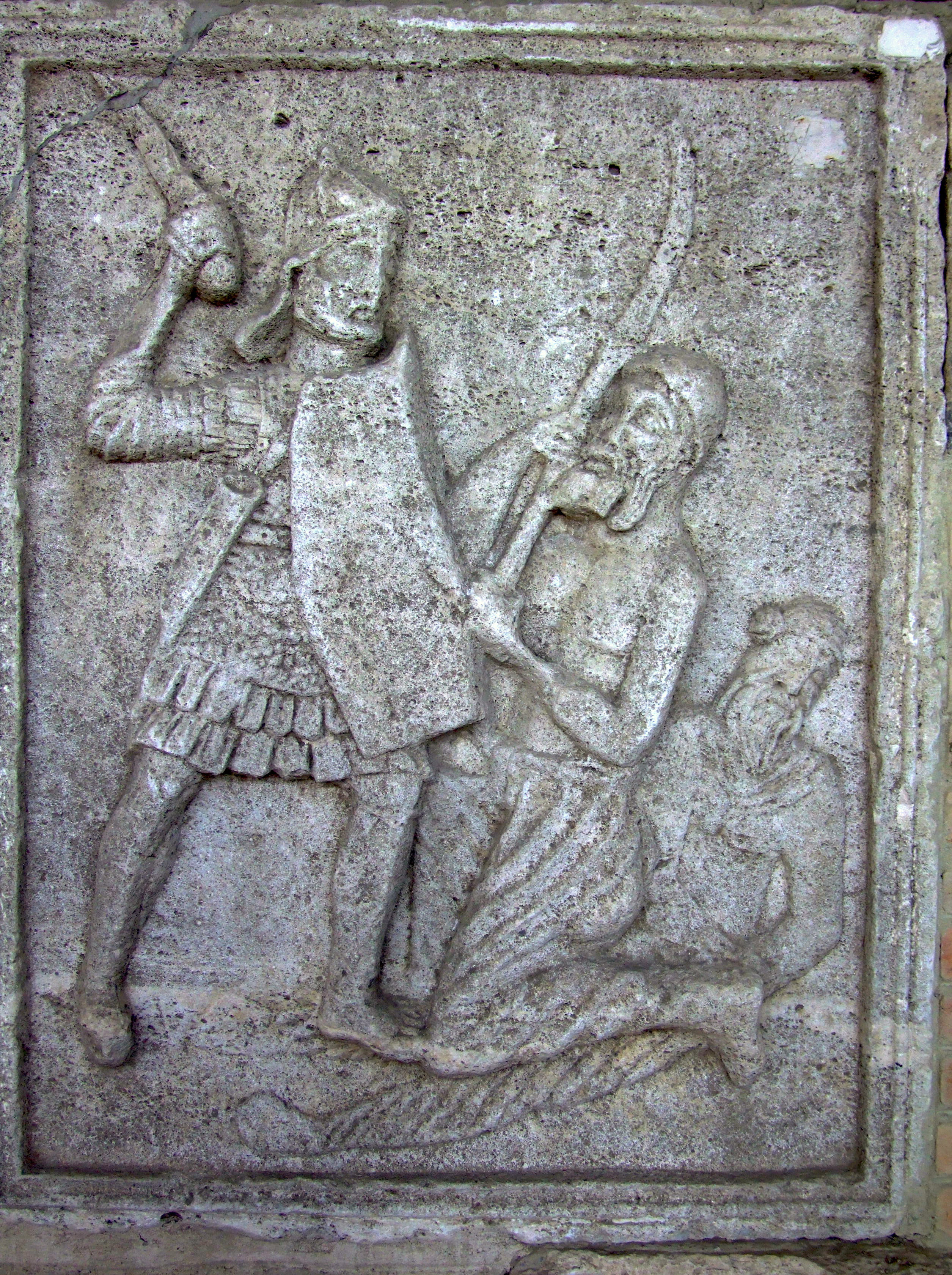FIRST, A QUICK SUMMARY OF THE ROMAN MANICA
The Roman manica-syle overlapping plate armor for one's limbs, perhaps inspired by the much older Achaemenid Persian version for cavalry that the Greeks called cheires (and identical armor worn by crupellarii gladiators), was in use by the Roman army from the 1st century AD onwards. Archaeological remains of manica have been found in England, Spain, Austria, and Romania. Roman legionaries are depicted wearing them in stone-carved relief on the Tropaeum Traiani monument (108 AD), Trajan's Column (113 AD), and the Column of Arcadius (401 - 421 AD). The late Roman administrative manuscript Notitia Dignitatum, completed by roughly the 420s AD and listing government offices of both the Eastern and Western halves of the empire, also depicts the manica along with various other pieces of Roman military equipment. In the mid 4th century AD the Roman historian Ammianus Marcellinus describes Roman cataphract cavalry wearing them during a military parade.
^Although some modern recreations have it all wrong by showing the plates overlapping downward towards the hand, this one does it right, by having them overlapping upwards towards the shoulder.
NOW, ON ITS EFFECTIVENESS...
Just how effective was the manica as worn by either Roman infantry or cavalry? How well did it perform particularly against the vicious hacking and slashing of the two-handed Dacian falx? The two monuments of Trajan's era mentioned above have numerous depictions of Dacians wielding this menacing weapon. Moreover, there are depictions of Roman infantry wearing the manica to protect their arms while being attacked by Dacians wielding falxes. Is there any evidence to show that this armor would have been suitable enough to stop a Roman limb from being hacked into or cut clean off by this powerful weapon? It can cleave through a solid wooden shield pretty damn well:
How about overlapping bronze or iron plates? Or for that matter a vest of lorica segmentata versus lorica squamata.
Also, another question: were the earlier Achaemenid and other West Asian varieties of cheira (e.g. Pontic armor) always bronze or copper plates? Or did they also utilize iron like the later Romans did with their own manica?Any archaeological evidence for that? Surely it was also used by the Seleucid and Parthian cataphracts.

















 Reply With Quote
Reply With Quote















